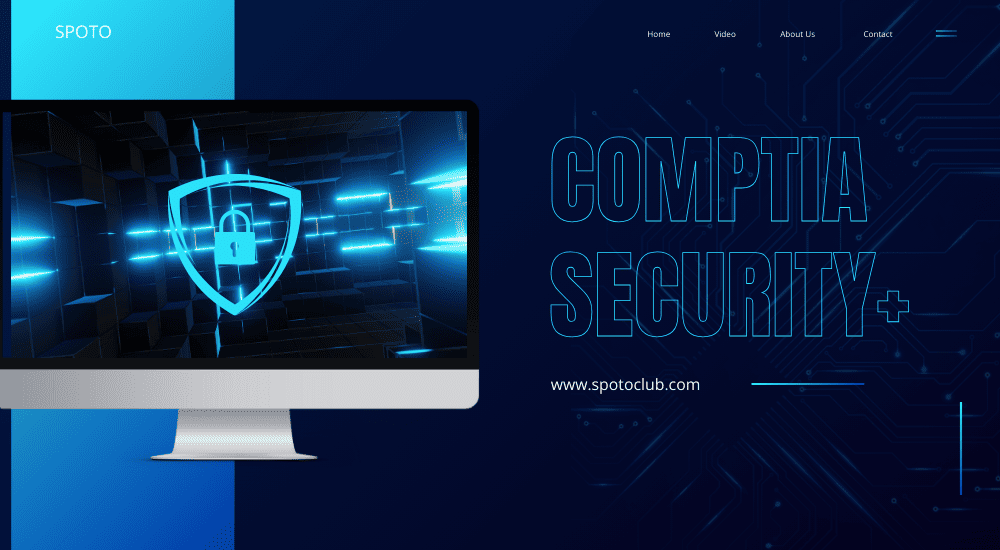
Featured Exams & Certifications in 2023
Hear how we've helped others get their certifications
Latest News

The Ultimate Guide to Six Sigma Certification: Programs, Training, and Career Opportunities
Table of ContentsIntroduction to Six SigmaSix Sigma Certification ProgramsLean Manufacturing vs. Six SigmaSix Sigma vs. LeanSix Sigma vs. PMPSix Sigma vs. AgileAgile vs. Lean Six SigmaScrum and Six SigmaLean Six Sigma Black Belt SalarySalary for Green Belt Six SigmaSix Sigma Master Black Belt SalaryBest Six Sigma Certification Programs by LevelTraining Expectations and RequirementsLean Six Sigma RoadmapConclusion Introduction to Six Sigma Six Sigma is a methodology focused on process improvement and quality management, aiming to identify defects, pinpoint causes, and enhance quality through process enhancement. History of Six Sigma In the 1920s, statistical process modeling introduced the concept of sigma. Motorola trademarked the term "Six Sigma" in 1984. In the late 1990s, GE adopted Six Sigma, leading to significant cost reductions. Benefits of Six Sigma Cost reduction Defect reduction Process stabilization Enhanced customer satisfaction Principles of Six Sigma Achieving stable process outcomes Defining, measuring, analyzing, improving, controlling processes Organizational commitment Detailed process definition and analysis Continuous evaluation Methodologies Six Sigma follows two main methodologies:DMAIC: Focuses on gradual process improvement for existing processes.DMADV: Emphasizes optimization for new products or processes. Six Sigma Certification Programs When it comes to Six Sigma certification programs, it is essential to choose the best program based on different levels such as Green Belt, Black Belt, and Master Black Belt. Reference Content: [シックス シグマ Reference Content] Six Sigma Certification Best Programs: It is crucial to identify top programs that align with individual skill levels and career goals. Training Expectations for Six Sigma Green Belt: Understand the requirements and expectations for achieving the Six Sigma Green Belt certification. By choosing the right program and adhering to training expectations, individuals can advance in their Six Sigma journey effectively. Lean Six Sigma Roadmap Understanding the roadmap for Lean Six Sigma is essential for implementing this approach in organizations successfully. Overview of Lean Six Sigma approach Implementing Lean Six Sigma efficiently Benefits of combining Lean and Six Sigma methodologies Free Lean Six Sigma Training Exploring resources for both online and offline training Tips for effective self-study in Lean Six Sigma Lean Manufacturing vs. Six Sigma Understanding the similarities and differences between lean manufacturing and Six Sigma methodologies is essential for strategic decision-making. Reference Content: [Lean and Six Sigma: Definition and Benefits] Difference Between Lean and Six Sigma: Highlighting the unique aspects of each methodology When to Use Each Approach: Under what circumstances lean manufacturing or Six Sigma should be implemented Six Sigma vs. Lean Comparing and contrasting Six Sigma and Lean methodologies can provide insights into their respective advantages and disadvantages. Reference Content: [Lean and Six Sigma: Definition and Benefits] Detailed Comparison: Analyzing the core differences between Six Sigma and Lean Advantages and Disadvantages: Highlighting the pros and cons of each methodology Six Sigma vs. PMP Comparing Six Sigma with Project Management Professional (PMP) certification can help individuals navigate their career paths effectively. Career Suitability: Which certification aligns better with different career paths Six Sigma vs. Agile Comparing Six Sigma with Agile project management can shed light on integrating Six Sigma principles into Agile teams for enhanced performance. Integration: How to merge Six Sigma methodologies with Agile project management Agile vs. Lean Six Sigma Understanding the distinctions between Agile and Lean Six Sigma methodologies is crucial for choosing the most appropriate approach based on project requirements. Application Scenarios: When to utilize Agile versus Lean Six Sigma Scrum and Six Sigma Exploring how Scrum methodologies can be effectively integrated into Six Sigma projects can lead to optimized project outcomes. Benefits of Combination: How integrating Scrum practices can enhance Six Sigma projects Lean Six Sigma Black Belt Salary Average Salary: Understanding the typical salary range for Lean Six Sigma Black Belts Factors Affecting Salary: Examining how experience, industry, and location influence salary levels Salary for Green Belt Six Sigma Average Salary: Exploring the typical salary for professionals holding a Green Belt Six Sigma certification Career Prospects: Considering the growth potential and career opportunities for Green Belt Six Sigma professionals Six Sigma Master Black Belt Salary Average Salary: Understanding the typical salary range for Six Sigma Master Black Belts Responsibilities and Career Opportunities: Highlighting the key roles and advancement pathways for Master Black Belts Six Sigma Certification Programs In the domain of quality management, Six Sigma certification programs play a pivotal role in enhancing skills and expertise at different organizational levels, ranging from Green Belt to Black Belt and Master Black Belt. These programs are designed to provide individuals with the necessary tools and knowledge to implement Six Sigma methodologies effectively. Let's delve into the best programs suitable for each proficiency level and explore the training expectations and requirements. Best Six Sigma Certification Programs by Level Green Belt Certification: The Green Belt program is ideal for individuals who are just starting their Six Sigma journey. It equips them with foundational skills in process improvement and data analysis. Black Belt Certification: Black Belt programs are tailored for professionals aspiring to lead complex projects and drive significant organizational change using advanced statistical methods. Master Black Belt Certification: The Master Black Belt certification is the highest level of expertise in Six Sigma. Individuals at this level are proficient in mentoring and coaching Black Belts and implementing strategic improvements across the organization. Training Expectations and Requirements Each level of Six Sigma certification comes with specific training expectations and requirements: Classroom Training: Many certification programs offer in-person classroom training sessions led by experienced Six Sigma professionals. Online Training: Virtual training programs are also available, providing flexibility for individuals who prefer self-paced learning. Project Work: Certification candidates are often required to complete real-world projects applying Six Sigma principles to demonstrate their understanding and competency. Exams: Successful completion of certification exams is typically a requirement to obtain official Six Sigma credentials. By enrolling in these structured certification programs and meeting the outlined training expectations and requirements, individuals can cultivate a deep understanding of Six Sigma methodologies and contribute significantly to process improvement initiatives within their organizations. Lean Six Sigma Roadmap When it comes to Lean Six Sigma, having a roadmap is crucial for successful implementation and reaping the benefits of both methodologies. Let's delve into an overview of the Lean Six Sigma approach, explore how it can be effectively implemented in organizations, and highlight the advantages of combining Lean and Six Sigma methodologies. Overview of Lean Six Sigma Approach Lean Six Sigma is a powerful methodology that aims at optimizing processes by eliminating waste and reducing variation. It combines the efficiency-driven principles of Lean with the data-focused strategies of Six Sigma to create a comprehensive approach to process improvement. Implementing Lean Six Sigma in Organizations Implementing Lean Six Sigma in organizations requires a structured approach. Key steps include: Identifying processes: Start by identifying the key processes that need improvement. Training teams: Provide teams with the necessary training on Lean Six Sigma tools and techniques. Execution: Implement Lean Six Sigma methodologies in the identified processes. Continuous improvement: Foster a culture of continuous improvement to sustain the gains achieved. Benefits of Combining Lean and Six Sigma The combination of Lean and Six Sigma offers several benefits, including: Enhanced efficiency: Lean principles help in streamlining processes, while Six Sigma ensures quality and consistency. Cost reduction: By eliminating waste and reducing variation, organizations can cut down on unnecessary expenses. Improved customer satisfaction: Delivering high-quality products or services efficiently leads to greater customer satisfaction. By following the Lean Six Sigma roadmap, organizations can achieve sustainable process improvement and drive overall operational excellence. Lean Six Sigma: A Comprehensive Guide In the realm of process improvement and quality management, Lean Six Sigma stands out as a powerful methodology that aims to enhance organizational efficiency by identifying defects, pinpointing root causes, and implementing process enhancements. Let's delve deeper into this structured approach across various key aspects: Conclusion Embracing Lean Six Sigma methodologies empowers organizations to achieve operational excellence by fostering a culture of continuous improvement and efficiency. Reference Content: Lean and Six Sigma: Definition and Benefits, Six Sigma for Project Management Question: What is Six Sigma certification? Answer: Six Sigma certification is a process improvement methodology that aims to minimize defects and variations in business processes. Question: What programs offer Six Sigma certification? Answer: Programs such as Green Belt, Black Belt, and Master Black Belt provide different levels of Six Sigma certification. Question: What type of training is required for Six Sigma certification? Answer: Comprehensive training in statistical analysis and process improvement techniques is essential for Six Sigma certification. Question: Are there online options available for Six Sigma certification? Answer: Yes, there are many online courses and programs that offer Six Sigma certification training. Question: What career opportunities are available for Six Sigma certified professionals? Answer: Six Sigma certified professionals can explore career opportunities in quality management, process improvement, and project management roles. Question: How does Six Sigma certification benefit organizations? Answer: Six Sigma certification helps organizations improve efficiency, reduce waste, and enhance customer satisfaction. Question: What industries commonly require Six Sigma certification? Answer: Industries such as manufacturing, healthcare, finance, and retail often value Six Sigma certification for process improvement. Question: How long does it take to complete Six Sigma certification? Answer: The duration of Six Sigma certification programs varies, but most can be completed within a few months to a year. Question: Can individuals with no prior experience pursue Six Sigma certification? Answer: Yes, individuals with no prior experience can start with Green Belt certification and progress to higher levels with additional training. Question: Is Six Sigma certification internationally recognized? Answer: Yes, Six Sigma certification is globally recognized and valued by organizations seeking to improve their operational efficiency.

The Ultimate Guide to USB-C Video Adapters: Connect Your Devices to Any Display
Table of ContentsIntroduction:Features to Consider:Types of USB-C Video Adapters:Choosing the Right Adapter:Troubleshooting Common Issues:Conclusion: Introduction: USB-C video adapters are versatile accessories that provide an efficient way to connect various devices to external displays. These adapters offer numerous benefits, including enhanced display capabilities and seamless connectivity. With a range of USB-C video adapters available on the market, users can choose the one that best fits their requirements. Features to Consider: When selecting a USB-C video adapter, there are several key features to consider: Resolution and refresh rate support: Ensure the adapter supports the desired resolution and refresh rate for optimal display quality. Compatibility with different devices: Check if the adapter is compatible with a wide range of devices, including laptops, smartphones, and tablets. Additional features: Look for adapters that offer additional functionalities such as charging and data transfer capabilities to enhance connectivity. Types of USB-C Video Adapters: There are several types of USB-C video adapters available, each catering to different display requirements: HDMI adapters DisplayPort adapters DVI adapters VGA adapters Choosing the Right Adapter: When choosing a USB-C video adapter, it is essential to: Determine the resolution and refresh rate required for your specific needs. Verify device compatibility to ensure seamless connectivity. Consider additional features and budget constraints to make the best selection. Troubleshooting Common Issues: Users may encounter common issues when using USB-C video adapters, such as: No signal or flickering display Incorrect resolution or refresh rate settings Charging or data transfer problems Conclusion: Overall, USB-C video adapters offer a convenient and efficient way to connect devices to external displays, enhancing user experience and productivity. By considering the key features and selecting the right adapter, users can enjoy seamless connectivity and optimized display quality. Question: What is a USB-C video adapter? Answer: A USB-C video adapter is a device that allows you to connect your USB-C enabled device to a display that uses different video input formats. Question: How can USB-C video adapters help me? Answer: USB-C video adapters can help you easily connect your laptop, tablet, or smartphone to external monitors, TVs, projectors, and more. Question: Are USB-C video adapters compatible with all devices? Answer: USB-C video adapters are compatible with most modern devices that support USB-C connectivity, but it's always best to check compatibility before purchasing. Question: What are the benefits of using USB-C video adapters? Answer: Using USB-C video adapters allows for seamless connectivity, high-quality video output, and the ability to extend or mirror your device's display. Question: Can USB-C video adapters support high-resolution displays? Answer: Yes, many USB-C video adapters support high-resolution displays, including 4K and even 8K resolutions, providing sharp and clear visuals. Question: Do USB-C video adapters require any additional software installation? Answer: In most cases, USB-C video adapters are plug-and-play devices, meaning they do not require any additional software installation for basic operation. Question: How do I choose the right USB-C video adapter for my needs? Answer: When choosing a USB-C video adapter, consider factors such as compatibility with your devices, supported resolutions, number of display outputs, and additional features like pass-through charging. Question: What are some popular brands of USB-C video adapters? Answer: Popular brands of USB-C video adapters include Apple, Dell, Anker, HP, and Belkin, among others. Question: Can USB-C video adapters support audio output as well? Answer: Yes, many USB-C video adapters support audio output either through the HDMI or DisplayPort connection, allowing you to enjoy both video and audio on your external display. Question: Where can I purchase USB-C video adapters? Answer: USB-C video adapters are available for purchase from online retailers, electronics stores, and directly from the manufacturers' websites.

The Ultimate Guide to CompTIA Security+ Certification: Preparation, Practice, and Success
Table of ContentsIntroduction to CompTIA Security+ CertificationExam Details and PreparationPractice Tests and Study MaterialsExam Details and Preparation for CompTIA Security+ CertificationIntroduction to CompTIA Security+ CertificationExam Details and PreparationPractice Tests and Study MaterialsExam Preparation Strategies5. Career Opportunities and Benefits Introduction to CompTIA Security+ Certification CompTIA Security+ certification is a renowned qualification in the field of information technology security. It offers a comprehensive overview of essential security concepts, equipping individuals with the necessary skills to secure networks and information systems effectively. Overview of the certification The CompTIA Security+ certification is designed to validate the baseline skills required to perform core security functions and pursue an IT security career. It covers a wide range of topics, including security controls, encryption, threat actors, social engineering, and more. Benefits and value of obtaining the certification According to IT Certification Value Data, 93% of hiring managers find certifications valuable, and 70% of IT professionals believe CompTIA certifications are worth obtaining. Having a Security+ certification not only enhances job prospects but also opens up opportunities for career advancement and higher salaries. Target audience and prerequisites The certification is ideal for IT professionals seeking to enhance their knowledge of information security fundamentals. Basic understanding of information network security, experience with operating systems like Windows or Linux, and knowledge of TCP/IP fundamentals are recommended prerequisites for pursuing CompTIA Security+ certification. Exam Details and Preparation Preparing for the CompTIA Security+ exam requires a structured approach and access to reliable study materials. Understanding the exam format, content, and passing score is crucial for effective preparation. Exam format, content, and passing score The CompTIA Security+ exam (SY0-701) is a computer-based test that consists of up to 90 questions. The passing score is set at 750 on a scale of 100-900. The exam covers various topics, including security concepts, threats, vulnerabilities, security architecture, operations, and program management. Recommended study time and resources It is recommended to dedicate 30-70 hours of study time for the Security+ exam, although the actual duration may vary based on individual experience and knowledge levels. Utilizing study guides, practice tests, and training materials aligned with the exam objectives can significantly enhance preparation. Tips for effective preparation Effective exam preparation strategies include practicing with mock exams to simulate the actual exam experience, focusing on time management techniques, adopting question-answering strategies, and being aware of common pitfalls to avoid during the exam. Practice Tests and Study Materials Access to practice tests and comprehensive study materials is essential for thorough preparation for the CompTIA Security+ exam. Utilizing both free and paid resources can provide a well-rounded approach to mastering the exam objectives. Free and paid practice tests available online There are various free and paid practice tests available online that align with the current Security+ exam objectives. These resources offer a simulation of the exam environment and help assess readiness for the actual test. Comprehensive study guides and training materials Comprehensive study guides and training materials tailored to the Security+ exam syllabus provide in-depth coverage of key topics such as security controls, encryption, hashing, digital certificates, threat actors, and more. These resources serve as valuable aids in understanding complex security concepts. Mock exams to simulate the actual exam experience Mock exams are valuable tools for simulating the actual exam experience and evaluating preparedness. By taking practice tests that closely mimic the format and content of the Security+ exam, test-takers can identify strengths and weaknesses to focus on areas that require improvement. Exam Details and Preparation for CompTIA Security+ Certification As you delve into the realm of CompTIA Security+ Certification, a crucial aspect to focus on is understanding the exam details and effective preparation strategies. This segment will provide insights into the exam format, content, passing score, recommended study time, and resources, along with valuable tips to enhance your preparation. Exam Format, Content, and Passing Score The CompTIA Security+ exam, coded as SY0-701, is a Computer Based Testing (CBT) assessment lasting 90 minutes. It consists of up to 90 questions covering various domains of information security. To attain success, a passing score of 750 out of a scale of 100-900 is essential. The exam content is distributed across five key domains: Security Concepts (12%) Threats, Vulnerabilities, and Mitigation (22%) Security Architecture (18%) Security Operations (28%) Security Program Management and Oversight (20%) Recommended Study Time and Resources Embarking on your journey to mastery requires dedication and structured study habits. It is advised to allocate 30-70 hours for focused preparation, which can vary based on your existing knowledge and experience in the field of cybersecurity. For comprehensive preparation, a mix of study materials is highly beneficial. Leveraging resources such as free practice tests based on the latest Security+ exam objectives, study guides, and training materials can enrich your understanding of critical concepts. Tips for Effective Preparation Efficient preparation is the linchpin to success in the CompTIA Security+ Certification exam. To optimize your study experience, here are some valuable tips to consider: Engage in regular practice tests to familiarize yourself with the exam structure and types of questions. Pay attention to Japanese terminology used in the exam questions if applicable. Utilize mock exams to simulate real exam scenarios and assess your readiness. Focus on understanding the core security concepts rather than rote memorization for a deeper comprehension. By incorporating these strategies into your study routine, you can enhance your preparedness for the CompTIA Security+ Certification exam and pave the way for a successful outcome. CompTIA Security+ Certification Guide Introduction to CompTIA Security+ Certification CompTIA Security+ certification is a renowned credential that signifies proficiency in IT security fundamentals. It offers numerous benefits for professionals in the cybersecurity domain, making it a valuable asset in today's competitive job market. This certification is ideal for individuals looking to enhance their knowledge and skills in information security. Exam Details and Preparation Before delving into the details of the exam and how to prepare effectively, it's essential to understand the format, content, and passing score requirements. The CompTIA Security+ exam covers a wide range of topics related to security controls, encryption, threat vectors, social engineering, and more. With a passing score of 750 out of 900, aspirants must be well-prepared to succeed. Recommended Study Time and Resources Experts recommend dedicating between 30-70 hours of study time to adequately prepare for the CompTIA Security+ exam. Utilizing a mix of free and paid practice tests, comprehensive study guides, and training materials can significantly enhance your preparation. Additionally, mock exams provide a simulated test experience to familiarize yourself with the exam format. Tips for Effective Preparation Manage your study time efficiently by creating a study schedule and sticking to it. Employ question-answering strategies such as process of elimination to tackle challenging questions. Avoid common pitfalls like procrastination and inadequate revision. Practice Tests and Study Materials Accessing free and paid practice tests online can be invaluable in gauging your readiness for the CompTIA Security+ exam. Additionally, utilizing comprehensive study guides and training materials can provide in-depth knowledge of exam topics. Mock exams offer a real-time exam experience, allowing you to assess your performance and identify areas for improvement. For more information on CompTIA Security+ Certification practice tests and study materials, visit this link. Exam Preparation Strategies When it comes to preparing for the CompTIA Security+ certification exam, effective strategies can make a significant difference in your performance. Here are some key tips to help you maximize your preparation efforts: Time Management Techniques Managing your study time efficiently is crucial for success in the exam. Create a study schedule that allocates specific time slots for different exam topics. Consider using time tracking tools or apps to monitor your progress and ensure you stay on track. Question-Answering Strategies Understanding how to approach different question types can help you navigate the exam more effectively. Practice answering different types of questions, such as multiple-choice, performance-based, and scenario-based questions. Familiarize yourself with the exam format to optimize your answering strategies. Common Pitfalls to Avoid Avoiding common pitfalls can prevent unnecessary mistakes during the exam. Some common pitfalls include rushing through questions, second-guessing answers, and neglecting to read questions carefully. Practice mindfulness and focus during exam simulations to minimize errors. By incorporating these exam preparation strategies into your study routine, you can enhance your readiness for the CompTIA Security+ certification exam and increase your chances of success. Remember, thorough preparation and strategic study habits are key to achieving your certification goals. 5. Career Opportunities and Benefits Jobs and industries where CompTIA Security+ is valued Salary expectations and career advancement opportunities Recognition and credibility in the IT security field When it comes to career opportunities and benefits associated with obtaining the CompTIA Security+ certification, there are several key aspects to consider. Jobs and Industries Professionals who hold the CompTIA Security+ certification are highly sought after in various job roles and industries. Some common job titles that require or value this certification include: Security Analyst Security Engineer Network Administrator Systems Administrator In addition to traditional IT roles, industries such as finance, healthcare, government, and technology services also highly value professionals with this certification due to the comprehensive cybersecurity knowledge it signifies. Salary Expectations and Career Advancement Professionals with the CompTIA Security+ certification typically enjoy competitive salaries and numerous opportunities for career advancement. According to industry data, individuals holding this certification can expect an average salary of $73,000 USD, making it a lucrative investment in one's career. This certification serves as a solid foundation for further career growth in the cybersecurity field, opening doors to higher-level positions with increased responsibilities and earning potential. Recognition and Credibility One of the key benefits of obtaining the CompTIA Security+ certification is the recognition and credibility it provides within the IT security field. Employers and industry professionals recognize this certification as a testament to an individual's expertise and commitment to cybersecurity best practices. Furthermore, the certification's international recognition and alignment with industry standards enhance a professional's reputation and credibility when seeking new job opportunities or advancement within their current organization. Overall, the CompTIA Security+ certification offers a combination of career stability, growth potential, and industry recognition that can significantly benefit individuals looking to establish themselves in the cybersecurity domain. What is CompTIA Security+ Certification? CompTIA Security+ Certification is a globally recognized certification that validates the essential skills and knowledge required to secure networks and systems. Why is CompTIA Security+ Certification important? CompTIA Security+ Certification is important because it demonstrates a professional's proficiency in cybersecurity and opens up career opportunities in the IT industry. How can I prepare for the CompTIA Security+ exam? You can prepare for the CompTIA Security+ exam by studying the exam objectives, taking practice tests, and enrolling in a reputable training course. What are the benefits of achieving CompTIA Security+ Certification? Achieving CompTIA Security+ Certification can lead to higher job prospects, increased salary potential, and recognition as a skilled cybersecurity professional. What topics are covered in the CompTIA Security+ exam? The CompTIA Security+ exam covers topics such as network security, threats and vulnerabilities, cryptography, and access control. How can I succeed in the CompTIA Security+ exam? To succeed in the CompTIA Security+ exam, you should study diligently, practice with exam simulations, and stay up-to-date with the latest cybersecurity trends. Are there any prerequisites for taking the CompTIA Security+ exam? While there are no strict prerequisites for taking the CompTIA Security+ exam, it is recommended to have some basic knowledge of networking and security concepts. How can CompTIA Security+ Certification enhance my career? CompTIA Security+ Certification can enhance your career by validating your skills, increasing your credibility, and opening doors to advanced cybersecurity roles. What study materials are recommended for preparing for the CompTIA Security+ exam? Recommended study materials for preparing for the CompTIA Security+ exam include official CompTIA study guides, online courses, and practice exams. Where can I find more information about CompTIA Security+ Certification? For more information about CompTIA Security+ Certification, visit the official CompTIA website or consult with a certified IT training provider.
The best way to become an expert is to learn from one
Our world-renowned instructors are some of the most experienced professionals in the industry and created our content with your success in mind.
SPOTO obtained a trademark registration certificate in the United States of America, with registration number No. 7417291, registered on Jun. 18, 2024. Obtained The People's Republic of China, with registration number No. 3853988, was registered on April 7, 2006. They are currently in effect.
SPOTO该商标已在美利坚合众国取得商标注册证,注册号码第7417291,注册日期2024年06月18日。已在中华人民共和国取得商标注册证,注册号码第3853988号,注册日期2006年04月07日,目前均在有效期中。










Cisco CCNP
Cisco CCIE lab
AWS Certification